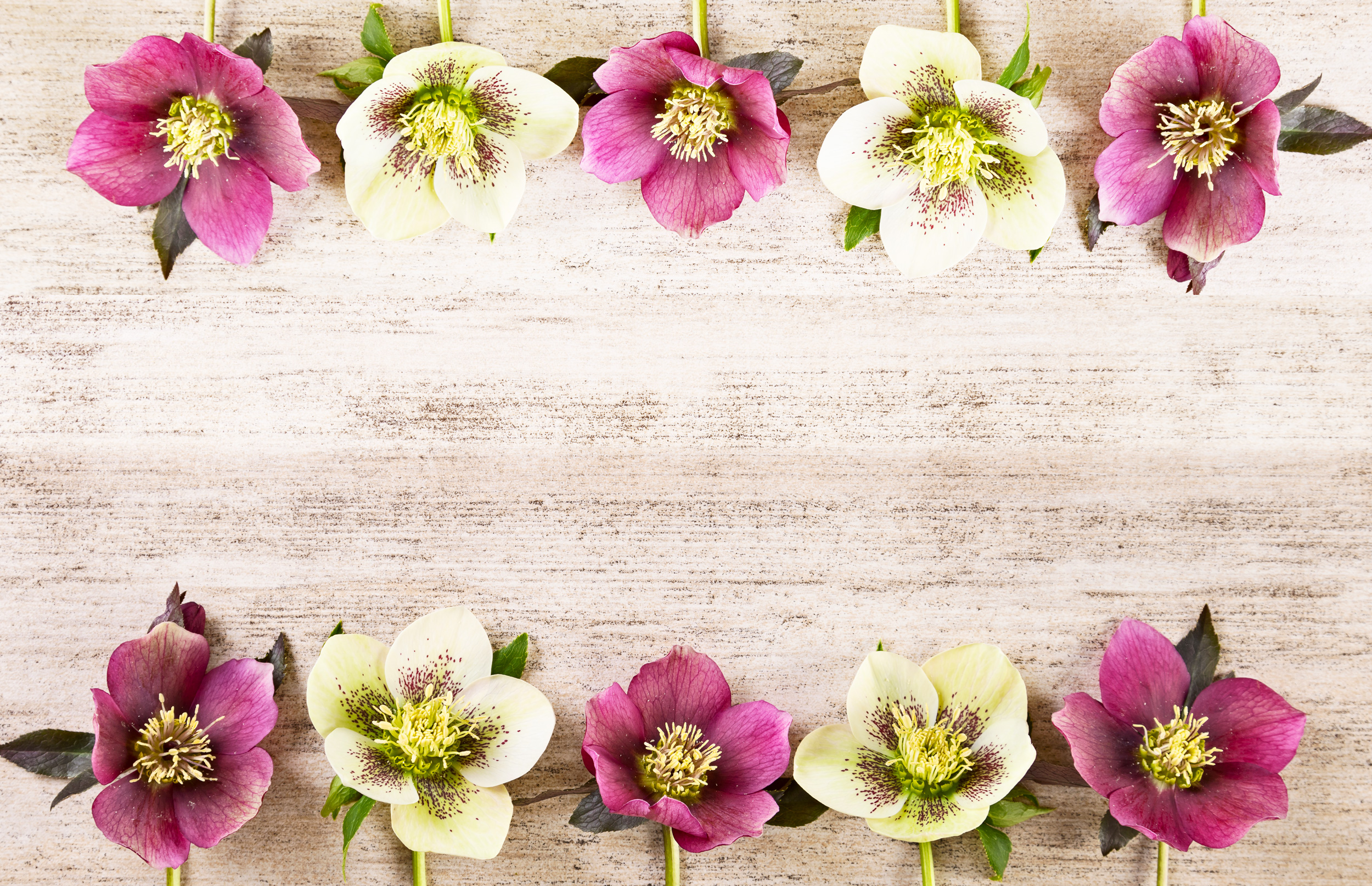Hellebores
Delightful members of the buttercup family, hellebores are a fascinating genus with twenty-two wonderful species and hundreds of stunning cultivars. When the weather gets cold, hellebores are amazing plants to have in your garden – not only are they evergreen, but they actually bloom in the dead of winter!

Hellebores are hardy in zones 4-9 with flowers that bloom for around a month between late November and early April depending on species and climate. Hellebore flowers can be found in gorgeous shades of red, pink, purple, blue, yellow, white, green and even black. Adding to the variety of colors are petal variations which range from solids, speckled, mottled, spotted, or picotee patterns. In addition to a wide range of colors, you can also find hellebore blossoms that have single or double layers of petals. The flowers on hellebores may face upward or downward. Across their native ranges in Europe and Asia, most hellebores flowers gracefully face downward but hybridization has introduced a myriad of cultivars with flowers that boldly face upward.

Hellebore plants usually reach around 12 inches tall and wide with some varieties growing to double that size. Their leaves are typically elongated, gracefully facing outwards in dense clusters. Adding to the interest of the plant, even when not in bloom, is the foliage. The foliage may be solid or variegated, some leaves have serrated edges, or soft hairs. Hellebores, especially, Hellebores orientalis, will frequently self-seed filling in a bare area in a few years’ time. Dropping seeds from late spring to early summer they germinate over the winter and the babies show up around the same time as when the parent plants bloom. At this early stage, I like to transplant them to other areas in my garden or share with friends. Additionally, the seedlings provide surprising interest because they can often look amazingly different from the parent plant!

Hellebores prefer rich, well-draining soil, but don’t need much initial fertilization other than a little compost mixed into the earth around it. These plants grow great around the base of deciduous trees as they enjoy the shade these trees provide in the summer as well as increased light levels in the winter after the trees’ leaves have fallen. Additionally, for downward flowering varieties, many savvy gardeners plant their hellebores on raised beds or atop slopes gaining a better view of downward facing blooms.

You can technically plant mature hellebores during any time of year as long as the ground isn’t frozen, but fall or spring are the optimal times so that your plants get established before the more extreme temperatures in winter and summer. Space out each plant around 18 inches apart so that they don’t compete for resources, and make sure to keep the crown of the plant above or just slightly below soil level to prevent rotting. Once they're in the ground, water thoroughly but avoid saturating the soil.
From this point on, give your hellebores around 1 inch of water each week, but hold back until the soil is almost dry if your garden’s getting plenty of natural rainfall. Hellebores are prone to root rot in wet conditions but can tolerate mild drought once they’re established. As mature hellebores start to develop new leaves in the spring, go ahead and cut off older, damaged foliage close to the base. You can also consider deadheading your flowers around this time if you don’t want your plants to reseed. Just wait until the blossoms have started to decline and cut the base of the flower stem. Later, during the summer, don’t worry if your plants are looking a little rough. Many hellebores go dormant around this time in hot climates.

Hellebores are resistant to deer and rabbits but can face pests such as aphids, leaf miners, and weevils. However, these pests can be easily controlled by blasting them off with a hose or by applying natural insect control. Hellebore diseases can also generally be avoided with proper pruning, spacing, and not over-watering. That being said, in the ten years I’ve enjoyed hellebores in my garden, I’ve never had any pest problems and the deer and rabbits don’t touch them. With minimal care, hellebores can provide dazzling winter color for years!

All parts of Hellebores are toxic to people and pets. In some individuals, they can even cause contact dermatitis. It’s best to wear gloves when handling them.


